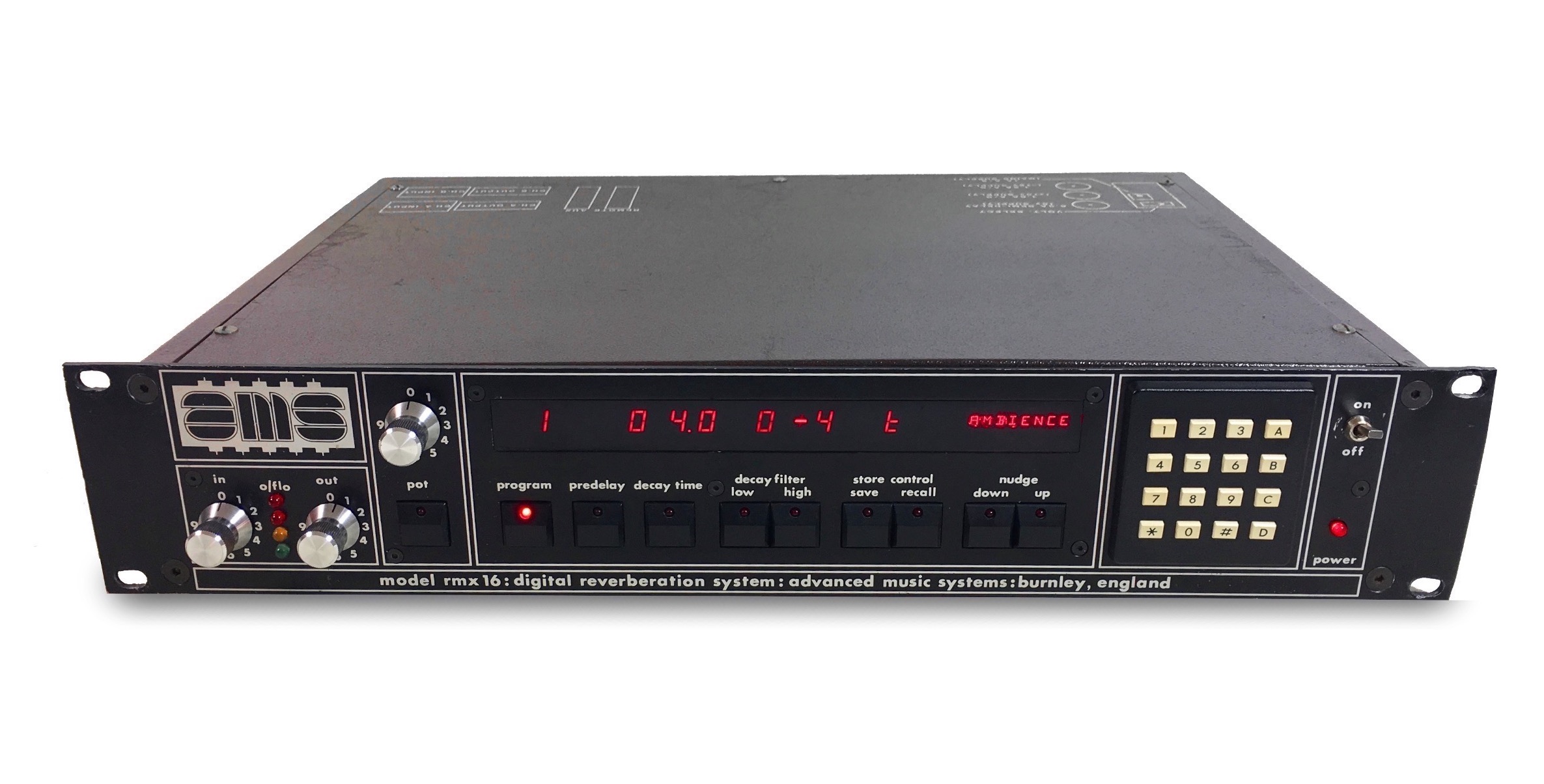The larger-than-life gated reverb that surrounds Phil Collins' drum fill in "In the Air Tonight" was discovered during a previous recording session with Peter Gabriel and engineer Hugh Padgham at Townhouse Studios.
The result of a combination of a live microphone, a listen-back mic compressor, and the built-in noise gate of an SSL B-series console, it was soon turned into an algorithm for the AMS RMX16—a then-new, rack-mounted reverb processor. The resulting "NonLin2" algorithm and hundreds of others on Townhouse Studios' RMX16 machine would find their way onto countless hits—from Collins, Gabriel, Kate Bush, Public Image Limited, and many leading pop figures of the '80s.
Matia Simovich is an artist, sound designer, and producer. He's the leader behind the dark synth wave of INHALT, has produced records with Tangerine Dream's Peter Baumann, SRSQ, and other artists; and designs sounds and presets for Sequential (fka Dave Smith Instruments) and other instrument manufacturers. Most recently, Matia has opened a studio called Infinite Power Studios in Los Angeles alongside producers Rhys Fulber and John Fryer.
Many years ago, he got the chance to work with Townhouse's original RMX16 while engineering at the world-renowned Alpha Centauri studio in London, whose owners had purchased Townhouse's own RMX16. While mixing tracks there, Simovich grew to love the processor.
Around that time, as Alpha Centauri closed and a lot of the equipment transferred over to U2 producer Flood and Alan Moulder's Assault & Battery Studio, Simovich was hired to make an impulse response library of all of the RMX16's algorithms, for the day when the machine itself would no longer be in use.
Now, years later, Simovich has revised and re-tooled his impulse response library to be the most accurate representation of the original Townhouse AMS RMX16. The algorithms, including the "In the Air Tonight"–inspired NonLin 2 and 193 more, are available in the Inhalt Townhouse RMX library.
You can take the IRs and load them into any convolution reverb plugin—like Apple Logic's Space Designer, Ableton Live 10's Convolution Reverb, or third-party software—and bring the sound of the Townhouse AMS RMX16 into your own work.
Why the AMS RMX16?
Back when Simovich was first hired to make the library, he learned all the peculiarities that made that AMS unit special.
"I always thought—I had used a couple of them before—I always thought there was something really special about that particular [RMX16]. I don't know if it's conjecture or what, but basically, that unit—because it was used on so many records that are visible—it has that sound," Simovich tells Reverb.

"The thing about the AMS that's unique is the decay tails—and the overall tonality—changes drastically when you use the onboard EQ, and that EQ is kind of bizarre. ... It actually changes the algorithm in a very distinct way. So part of what I did was to go through the unit and sample very, very specific EQ settings for each decay time, to make it possible to actually use this in any kind of meaningful way in a professional production."
For years, Simovich used his library for his own productions—while Flood decided to keep the original Townhouse RMX16 at Assault & Battery—but the library he compiled was never commercially available. But as digital emulations of the RMX16 started to pop up, Simovich thought his samples captured the sound and peculiarities of the machine in ways others just didn't.
So, Simovich decided to make his library available for public use, meticulously editing the original samples, coming up with a clean-and-easy file management system, and otherwise forming his personal collection into a viable commercial product.
Townhouse Studios and AMS
What's particularly interesting is the close relationship between Townhouse's pioneering gated reverb sound and AMS.
In the oft-told tale, that famous gated reverb sound was first heard by Hugh Padgham as Phil Collins played drums on the Peter Gabriel song "The Intruder." The intense compression was thanks to the built-in compressor on the SSL 4000 B console's listen-back microphone, so that chatter from the back of the recording room could still be picked up and heard by those in the control room.
Intrigued by the huge sound the listen-back compressor provided, Padgham got the board patched in such a way that they could actually record it, while using the SSL's per-channel noise gates. Of course, this meant that you'd need a very particular setup to replicate the tone.
"At the same time, AMS was working very, very closely with Townhouse Studios—because Townhouse was the Virgin Records studio, one of these epicenters for big records in the late '70s and throughout the '80s," Simovich says.
"When they heard this sound, then they came up with an algorithm so that you don't have to go through this whole process to get that sound—setting up a mic, running it through this particular compressor that was available on the half-a-million-dollar console only. So they developed the NonLin2 algorithm based off of the feedback from Townhouse Studios and Hugh Padgham."
Distilled into the AMS RMX16, it was but one of many digital reverb algorithms put to great use at Townhouse—and elsewhere. "After the AMS RMX16 came out, then it was just open season on that drum sound. That was the drum sound of the time, that became so highly in demand," Simovich says. "From '81 to '90, anybody that went through those doors [at Townhouse], that unit was used on."
While AMS built an affordable way to get those reverbs in its own time, now Simovich is offering his library at a fraction of that price. Get the Inhalt Townhouse AMS RMX16 Impulse Response Library here.

